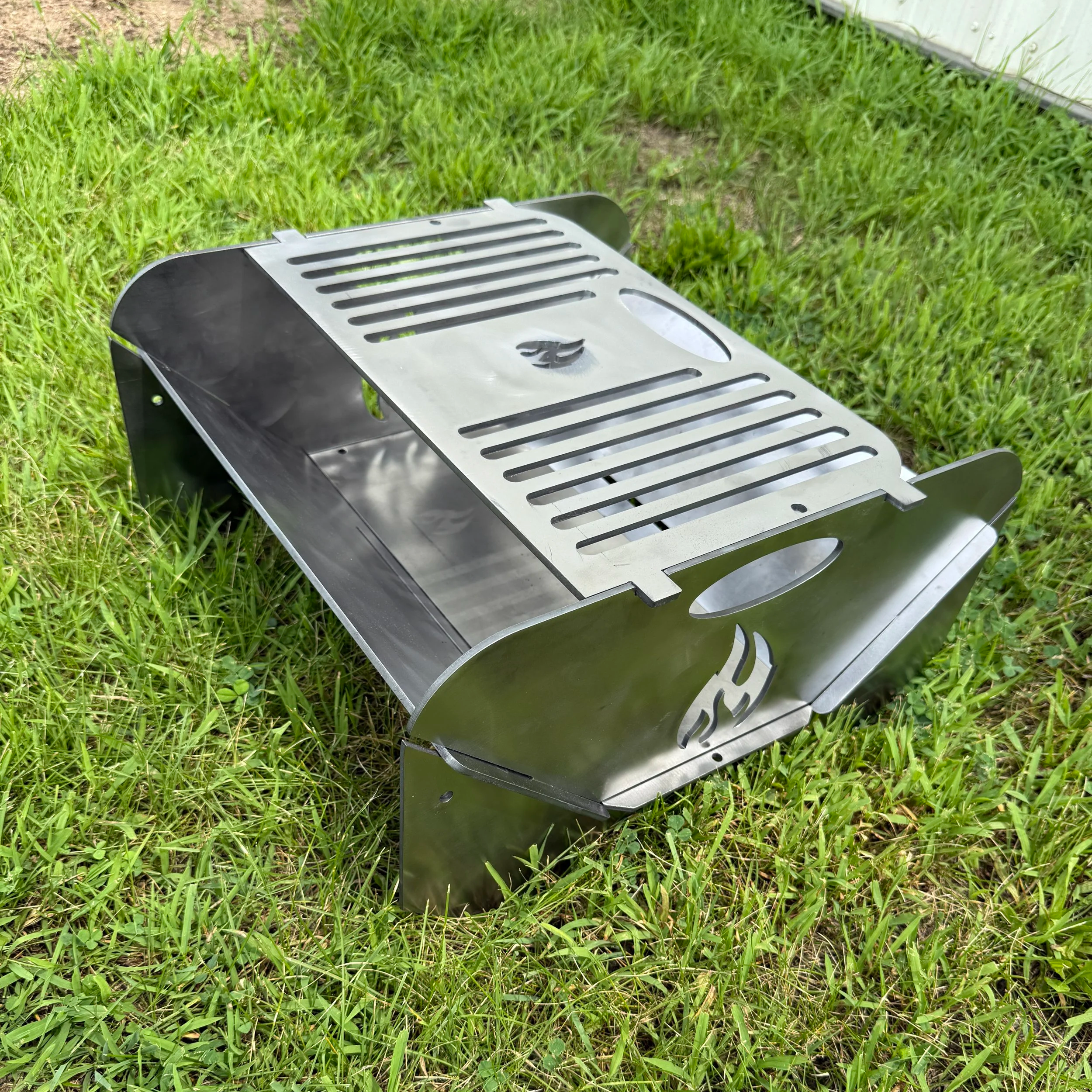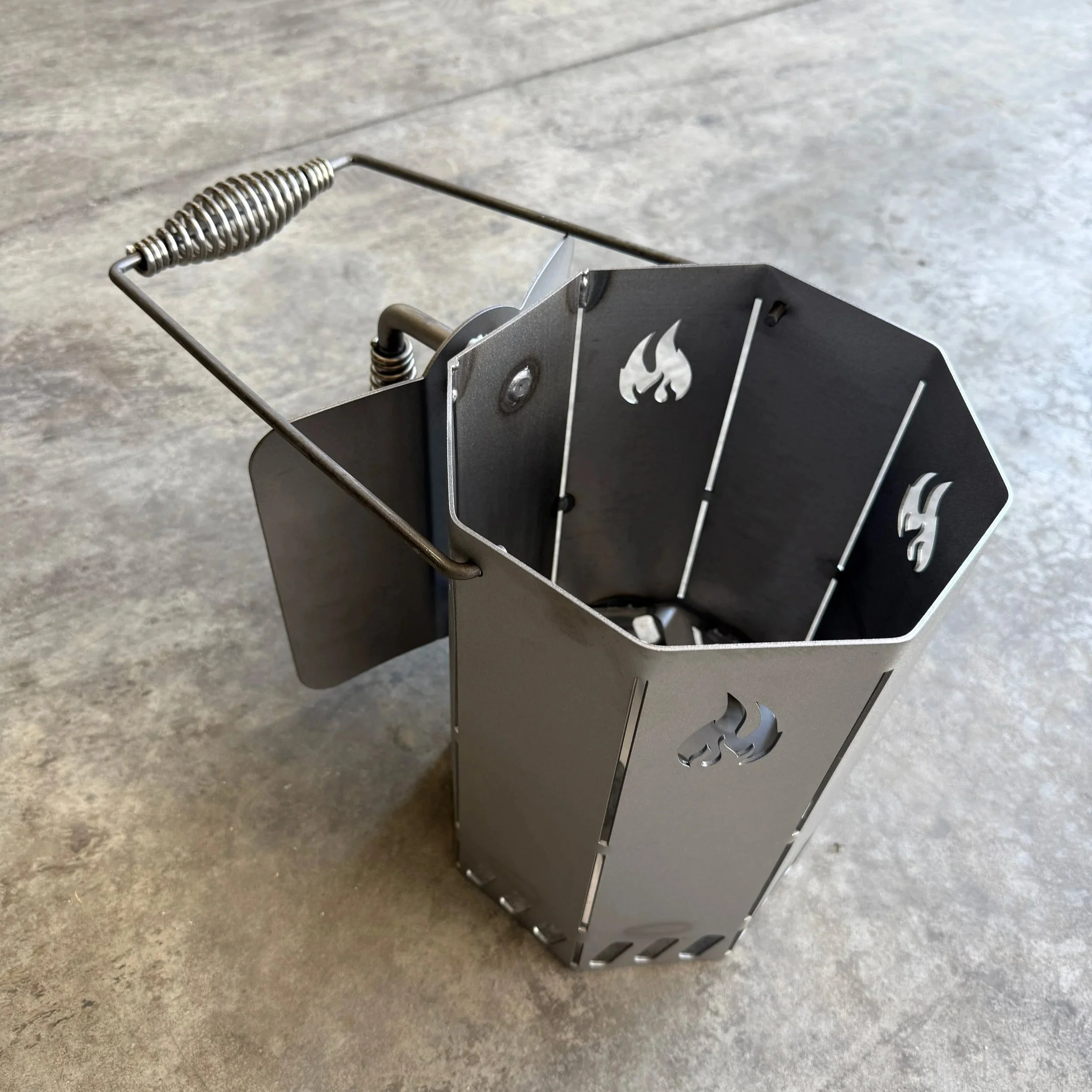How Much Charcoal to Use
The Definitive Guide
Mastering the use of charcoal is both an art and a science. Whether you're a seasoned grill master or a novice, understanding how much charcoal to use can make a significant difference in your grilling and smoking results. This guide will take you from basic rules of thumb to advanced techniques, ensuring you can confidently control your grill and produce delicious meals every time.
Basic Rules of Thumb
Charcoal Amounts for Different Foods
The easiest way to start is by considering the type of food you're cooking. Here's a simple guide:
Tender meats (like fish): Use about 25 briquettes (this would fill about a quarter of a charcoal chimney), or 1 lb (1/2 kg) of lump charcoal.
Burgers and sausages: Use about 50 briquettes (half or more of a chimney), or 2 lb (1 kg) of lump charcoal.
Steaks and other high-heat items: About 100 briquettes (a full chimney) or 4lbs (1.8 kg) of lump charcoal.
Charcoal Amounts by Grill Size
The size of your grill also affects how much charcoal you need. If you’re using direct heat grilling (explained later in the article), here are a few rules of thumb:
Small grills (16 in / 40 cm): Around 25-30 briquettes, or 1 lb (1/2 kg) of lump charcoal.
Medium grills (22 in / 55 cm): Approximately 35 briquettes, or 2 lbs (1 kg) of lump charcoal.
Large grills (26 in / 65 cm): 50+ briquettes, or 5 lbs (2.4 kg) of lump charcoal.
Adjusting Charcoal for Weather Conditions
Windy, cold, or rainy weather can impact your grill’s temperature. On such days, you might need to add more charcoal or adjust your grill setup to maintain consistent heat.
Types of Charcoal
Charcoal Briquettes
Briquettes are uniform blocks made from compressed sawdust and other additives. They provide a consistent and even burn, making them a favorite for many grillers.
Pros and Cons:
Pros: Easy to light, consistent heat, longer burn time.
Cons: Produce more ash, contain additives that can affect flavor.
Lump Charcoal
Lump charcoal is made from pure hardwood. It burns hotter and faster, giving food an authentic smoky flavor.
Pros and Cons:
Pros: Natural composition, less ash, burns hotter.
Cons: Burns less consistently, can be more expensive.
Direct Heat Grilling
Ideal Foods for Direct Heat
Direct heat grilling is perfect for quick-cooking items such as:
Burgers
Hot dogs
Steaks
Vegetables
Setting Up for Direct Heat Grilling
Spread the charcoal evenly across the bottom of the grill for uniform heat. Once the coals are lit and covered with white ash, place the food directly over them.
Indirect Heat Grilling
Ideal Foods for Indirect Heat
Indirect heat is best for slow-cooking larger cuts of meat or recipes that require longer cooking times:
Whole chickens
Ribs
Large roasts
Charcoal Amounts for Indirect Heat
For indirect heat grilling:
Small grills (16 in / 40 cm): Start with about 15 briquettes, and add 6 more every hour. (Or 2 handfuls of lump charcoal, adding another handful each hour.)
Medium grills (22 in / 55 cm): Start with about 20 briquettes, and add 10 every hour. (Or 2 handfuls of lump charcoal, adding another handful each hour.)
Large grills (26 in / 65 cm): Start with about 30 briquettes, and add 15 every hour. (Or 3 handfuls of lump charcoal, adding another handful each hour.)
Creating Two-Zone Cooking Setups
A two-zone setup allows for both direct and indirect cooking:
Hot Zone: Heap charcoal on one side of the grill.
Cool Zone: Leave the other side of the grill without charcoal.
Place food that requires high heat over the hot zone and food that needs slow cooking over the cool zone.
Smoking with Charcoal
Low and Slow Smoking Setup
Temperature Range: Ideal for cooking at 225-250°F. Use a charcoal setup that maintains a consistent low temperature for several hours.
Minion Method Setup: Fill the charcoal ring with unlit briquettes, light about 20 briquettes, and place them on top. This method allows for a slow, controlled burn.
Charcoal Snake Method Setup: Arrange a double semicircle of charcoal briquettes around the inside edge of the grill, light one end, and let it burn slowly.
Hot and Fast Smoking
High-Temperature Smoking Setup: For cooking at 275-350°F. Use a full chimney of lit coals to achieve high temperatures quickly.
Managing Heat and Smoke: Adjust air vents to control the temperature and add wood chips for a smoky flavor.
Lighting Charcoal
Using a Charcoal Chimney Starter
Fill the chimney with the desired amount of charcoal.
Place 2-3 sticks of fatwood or crumpled newspaper under the chimney.
Light the fatwood or newspaper.
Wait until the coals are ashy (about 15 minutes), then pour them into your grill.
Alternative Lighting Methods
Fatwood Firestarter: Place fatwood sticks on the grill and light them, then place the chimney over the top.
Electric Charcoal Starter: Place the heating element in the charcoal, plug it in, and wait until the coals are lit.
Newspaper and DIY Techniques: Roll up newspaper and place it under the chimney, light the paper to ignite the coals.
Controlling Grill Temperature
Using Air Vents
Open vents to increase temperature and close them partially to reduce temperature. The airflow controls the intensity of the heat.
Adding Charcoal During Cooking
You can add more charcoal to the grill every 30 minutes to maintain heat, especially for long cooks.
Maintaining Consistent Heat
Monitor the grill temperature regularly and adjust vents as needed to keep a steady temperature.
Advanced Charcoal Management Techniques
Charcoal Arrangements for Different Grill Shapes
Round Grills: Arrange coals around the outer edge, leaving the center clear.
Rectangular and Barrel-Shaped Grills: Place coals on one half of the grill, leaving the other half without coals.
Experimenting with Charcoal Quantities and Arrangements
Try different amounts and arrangements of charcoal to find what works best for your grill and cooking style.
Using Temperature Probes and Thermometers
Use these tools to monitor internal grill temperature and ensure your food is cooked perfectly.
Enhancing Flavor with Charcoal
Incorporating Wood Chips and Chunks
Types of Wood and Flavor Profiles:
Hickory: Strong, smoky flavor.
Apple: Sweet, mild flavor.
Mesquite: Intense, earthy flavor.
Seasoning Charcoal
Some grillers season their charcoal with herbs and spices to add extra flavor to their food.
Safety Tips and Best Practices
Handling and Storing Charcoal Safely
Store charcoal in a dry place to prevent it from becoming damp. Handle hot coals with heat-resistant gloves.
Preventing and Managing Flare-Ups
Keep a spray bottle of water nearby to manage flare-ups. Move food to the cool zone if flames get too high.
Cleaning and Maintaining Your Grill
Regularly clean grill grates with a brush before and after use. Remove ash frequently to ensure proper airflow.
That’s It!
Recap the key points covered in this guide, and experiment with different setups and charcoal quantities to find what works best for your grilling style. And don’t forget to share your experiences and tips with fellow grillers!
By following these guidelines, you'll master the art of charcoal grilling and smoking, ensuring every meal you cook is delicious and perfectly cooked.



